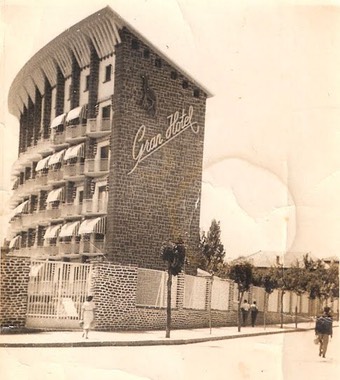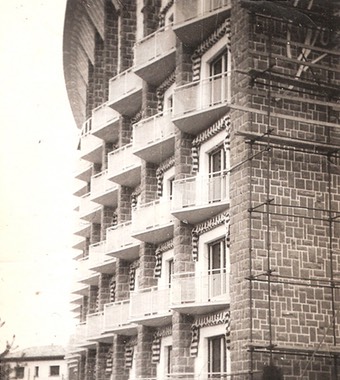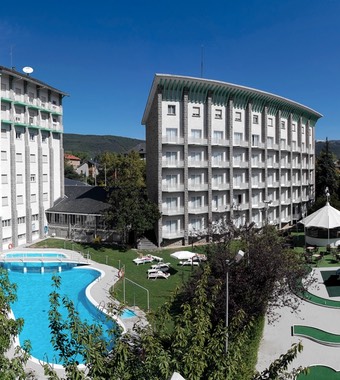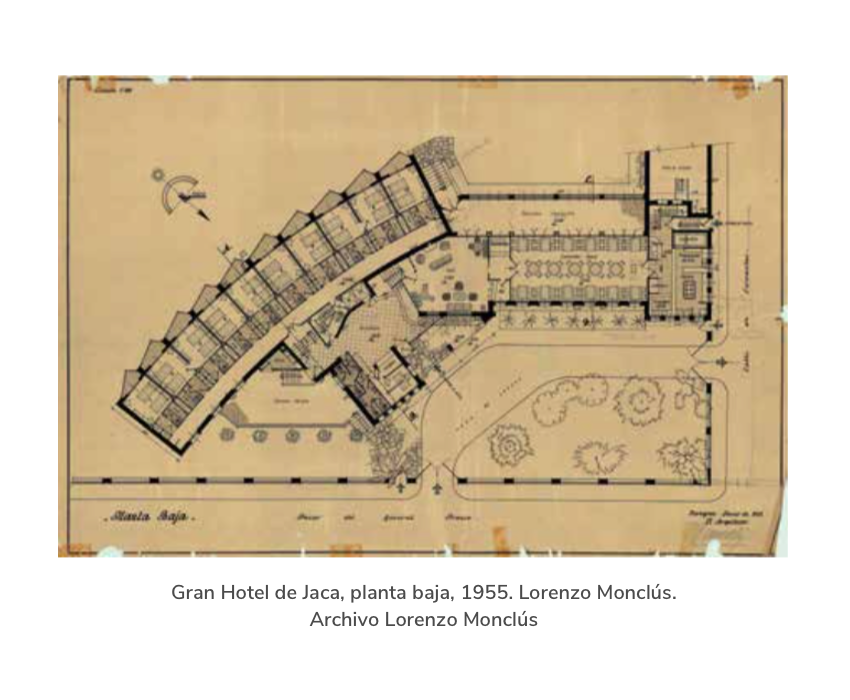Work of the Zaragoza architect Lorenzo Monclús Ramírez (who also held the position of municipal architect of Jaca), the Gran Hotel de Jaca, projected in 1956 and inaugurated in 1958, of which the original pillars that rise independent of the rest of the structure stand out, anticipating to the facade, to hold the large flight of the upper eaves.
The hotel was a milestone in the recent history of the city, comparable to the arrival of the railway or the establishment of the summer university. If the first contributed to its commercial boom and the second involved the international projection of the University of Zaragoza from Jaca, the new equipment evidenced the importance of the city as a holiday destination. Numerous postcards with images of it were published, becoming one more icon of the population.

































